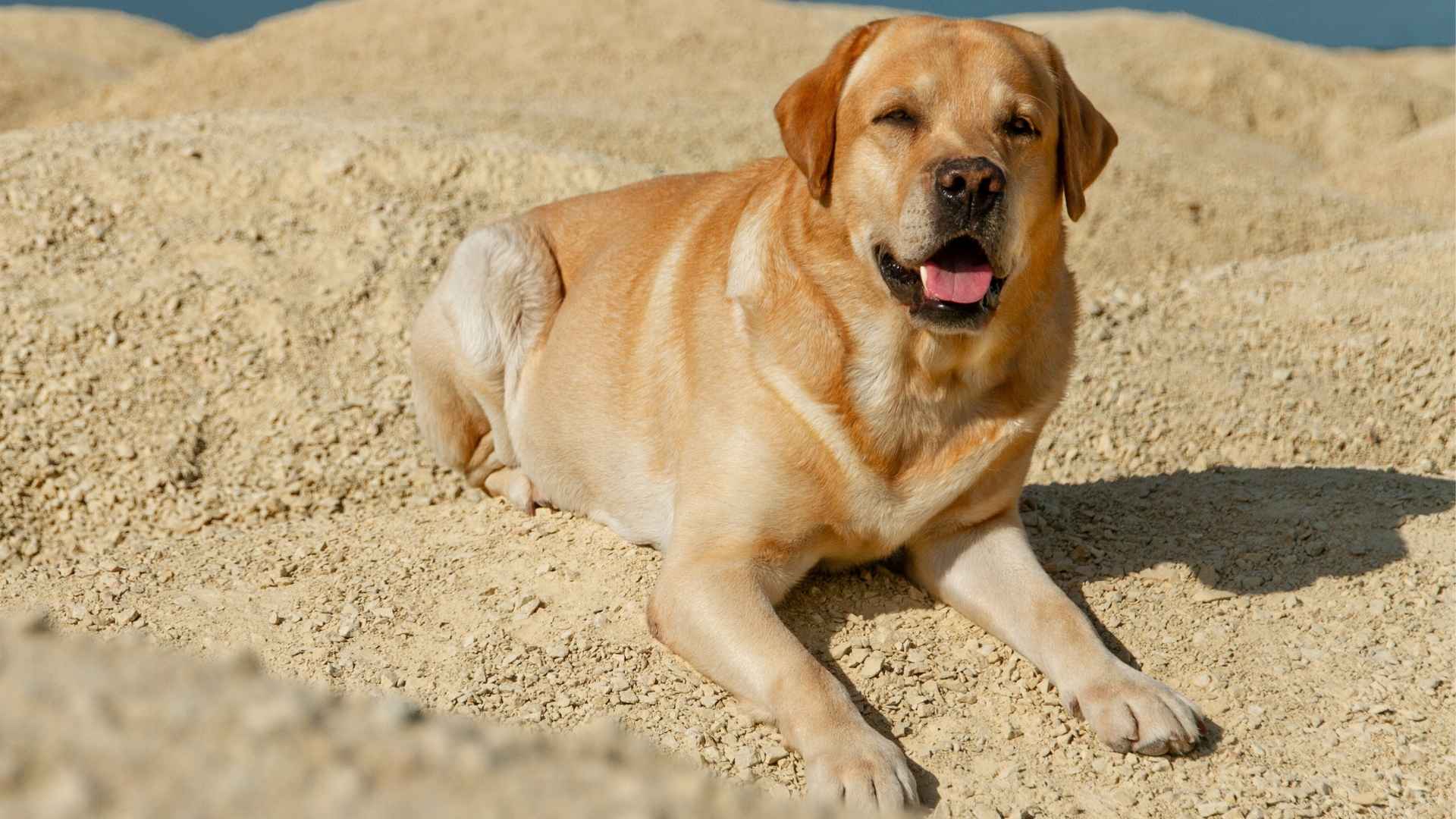It is common knowledge that breeds with thick coats or short snouts are vulnerable in warm weather. Did you know that dogs can suffer from heatstroke in as little as 10 minutes when exposed to extreme heat and humidity?
But there’s good news—some dogs are built for heat. Whether it’s their short fur, lean bodies, or desert origins, certain breeds thrive where the sun shines strong.
From lounging in sun-drenched yards to staying cool with minimal effort, they’re excellent companions for warmer parts of the world. Towels and fans may help, but nature has already equipped these breeds with the right tools for tropical life.
If you live where summers stretch long and hot, you’ll want a companion that stays cool while keeping up. This guide introduces breeds that are naturally suited for hot climates and active, sunny days.
Dog Breeds for Hot Climates
1. Chihuahua
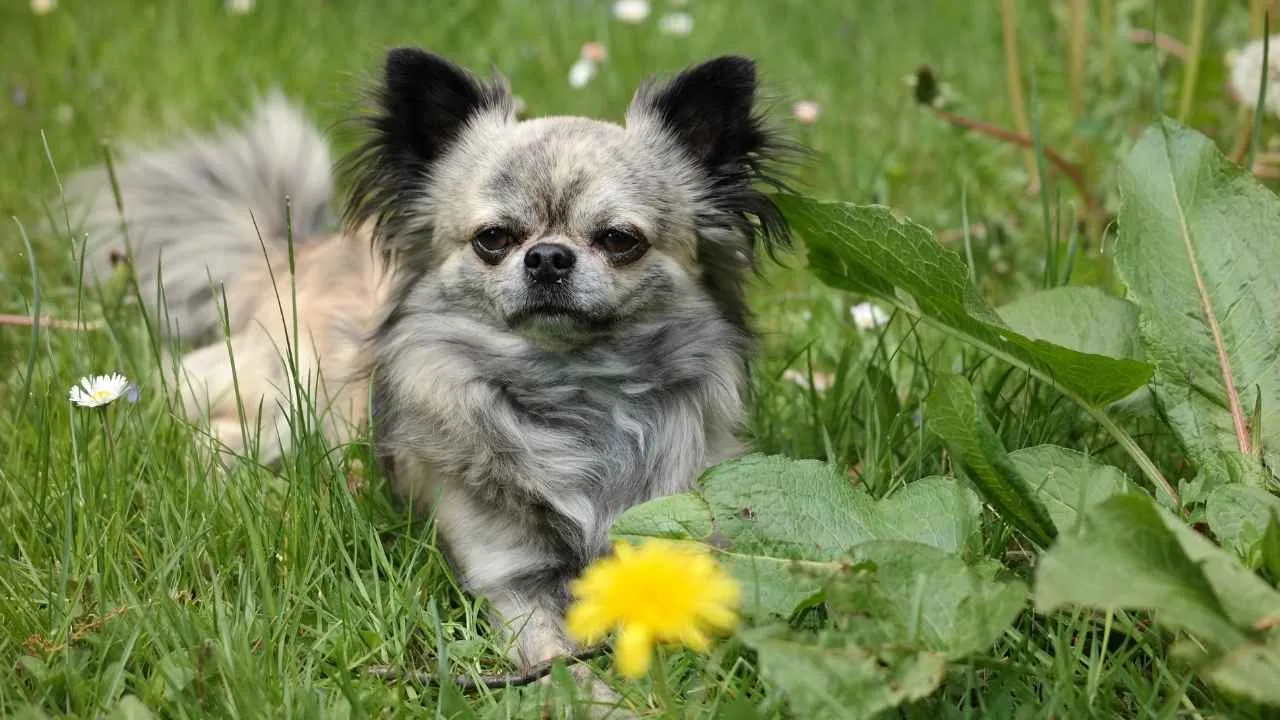
The Chihuahua’s small body surface area allows it to regulate heat more efficiently than larger breeds. Their thin coats, especially in short-haired varieties, make them better suited for dry, high-temperature regions. They tend to seek shade instinctively, minimizing risks in prolonged sun exposure.
Energy Levels That Fit the Climate
In warmer settings, their lower endurance works to their advantage—they don’t overexert or demand extended activity outdoors. Brief walks or light play in shaded spaces meet their needs well. Their alertness doesn’t wane in the heat, which helps them stay responsive.
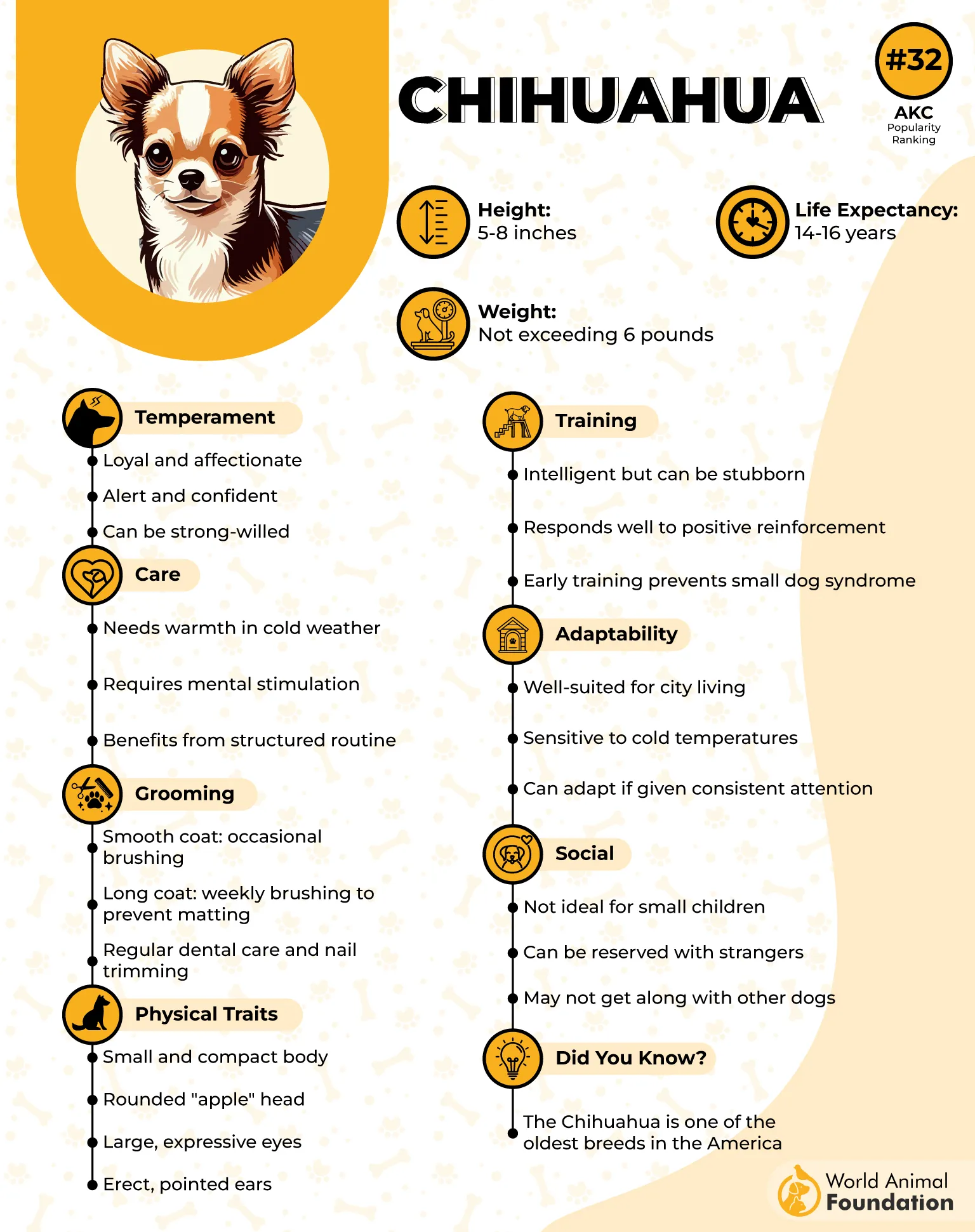
Social Cues and Compatibility
While often labeled feisty, many Chihuahuas can live with other dogs peacefully when socialized early. They adapt to shared routines without dominating pack dynamics. Their compact size also reduces the physical competition often seen in larger group environments.
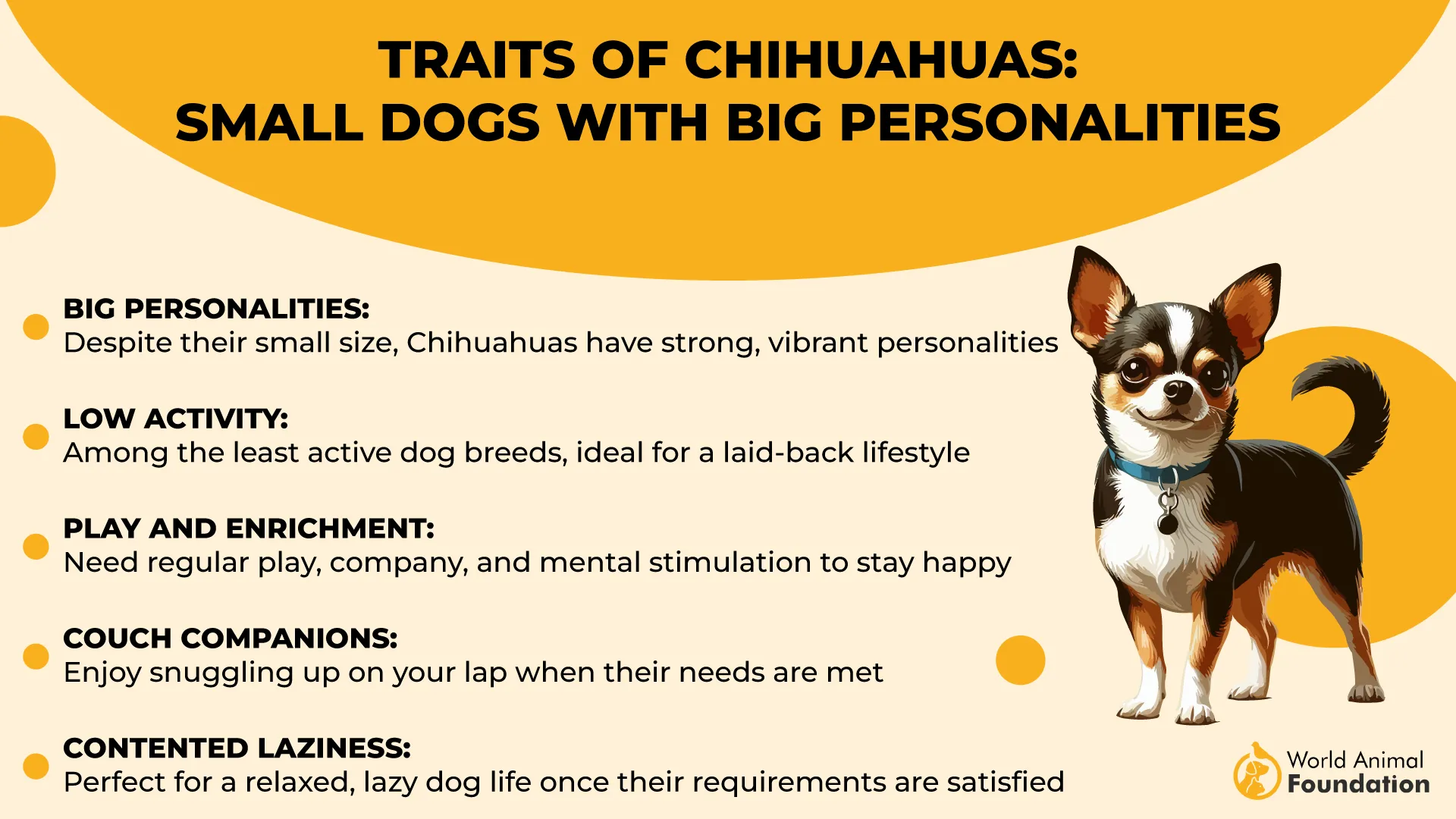
A Breed Steeped in History
One of the oldest North American breeds, the Chihuahua is believed to descend from the Techichi—dogs kept by ancient Toltecs. That lineage includes adaptation to warm weather long before modern breeding. It’s one of the best dogs to keep in climates where heat can be unforgiving.
2. Australian Cattle Dog
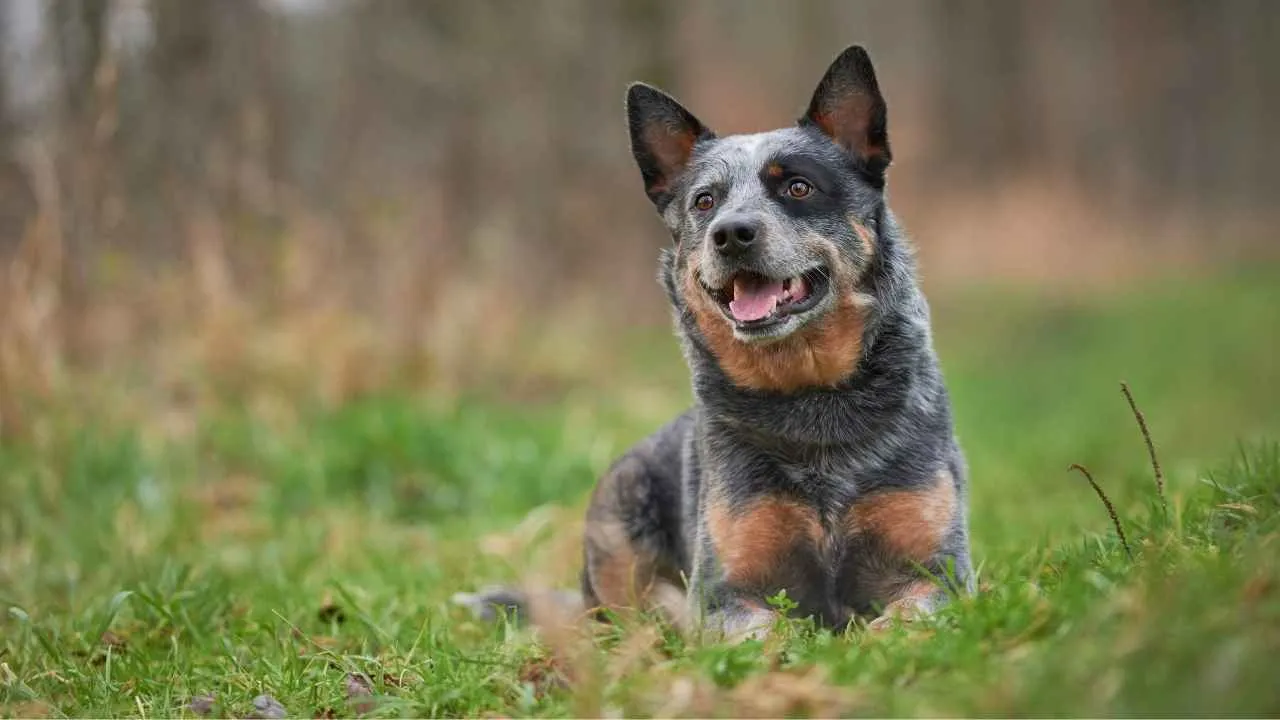
Did You Know: One named Bluey holds the record as the world’s oldest dog, living 29 years and 5 months, showing the breed’s resilience under long-term outdoor conditions, according to ABC.
Bred to handle long hours on the move in the Australian outback, this breed naturally tolerates intense sun. Their internal heat regulation supports sustained work across dry, open ranges. A sturdy frame and sharp instincts help them navigate without fatiguing early.
Protective Outer Layer
Their coat type is short, dense, and weather-resistant, offering UV protection and insulation against surface heat, as per Zealandia Pets. It repels dirt and debris without needing excessive grooming. This makes it practical for livestock handlers in areas with heavy dust or intense sunlight.

High-Drive, Low-Risk Behavior
They don’t rely on excessive barking or anxious pacing, which conserves energy during the hotter hours. Their mental stimulation needs are high, but they’ll rest strategically when temperatures rise. Proper shade and hydration keep their drive intact throughout the day.
Built for Climate and Control
Australian Cattle Dogs have a working origin that aligns perfectly with warmer climates, particularly arid and semi-arid zones.
3. Ibizan Hound
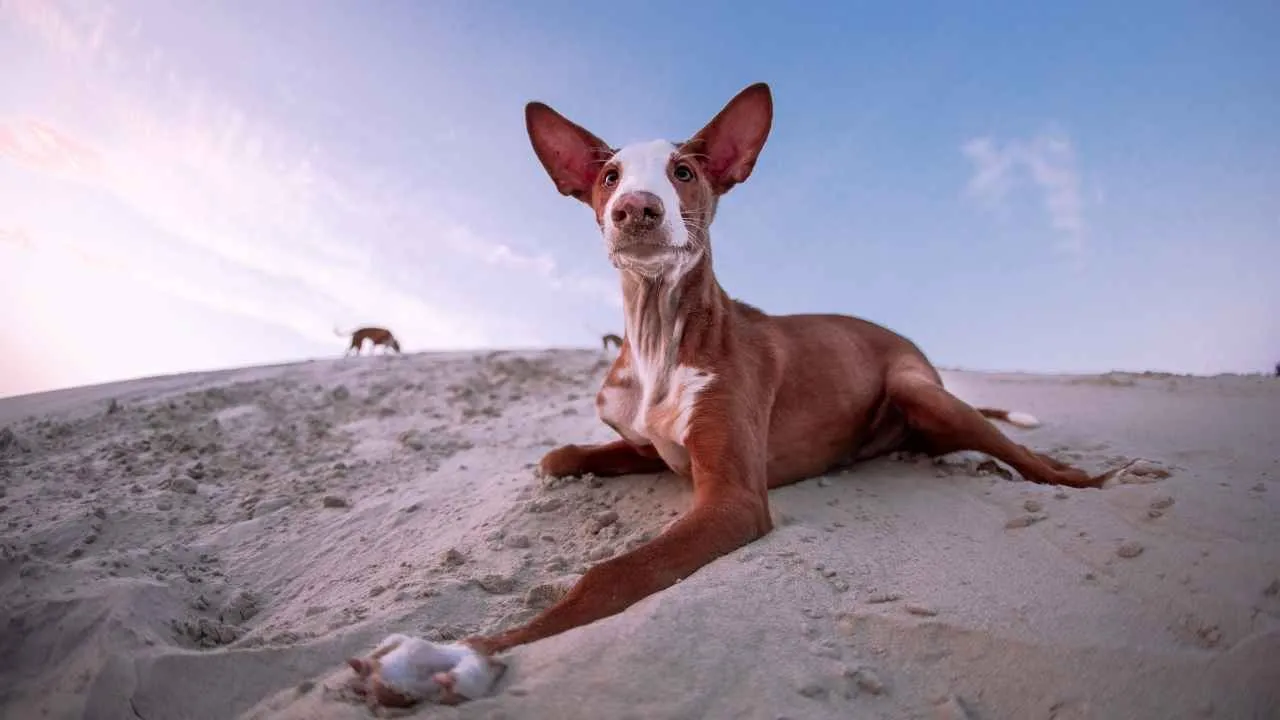
The Ibizan Hound has long, lean limbs and a deep chest—traits that enhance airflow during motion. Their skin clings tightly with minimal insulation, which helps dissipate heat efficiently in dry settings. These physical traits support long sprints without dangerous spikes in body temperature.
Origin Shapes Endurance
Bred on the Balearic Islands for rabbit hunting, they developed the ability to cover rough, sun-drenched terrain with efficient movement. The breed’s breathing pattern stays steady during extended activity. Their structure and lung capacity help them move without overheating.
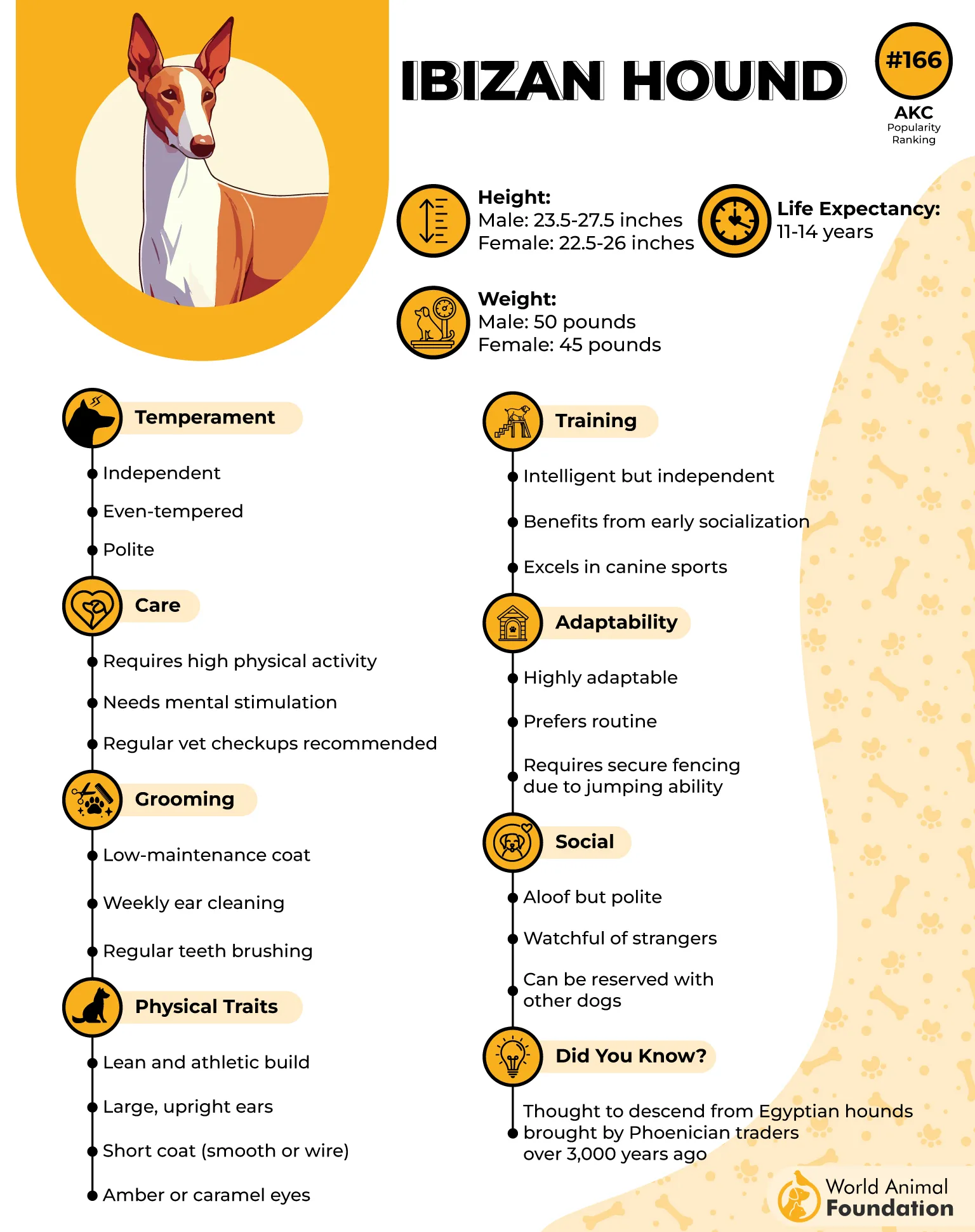
Daytime Habits and Instincts
Ibizans naturally pace their activity based on sunlight, often choosing shaded rest during the brightest hours. They rely more on sharp sight than scent, staying alert even when still. This instinctive rhythm aligns with survival in areas prone to extreme warm temperatures.
A Historical Tie to Ancient Cultures
One of the oldest known sighthound breeds, their likeness appears in ancient Egyptian carvings dating back over 5,000 years, as stated in PetCareRX. These depictions mirror their upright ears and elegant build. That longevity speaks to both their form and heat adaptability across time.
4. Afghan Hound
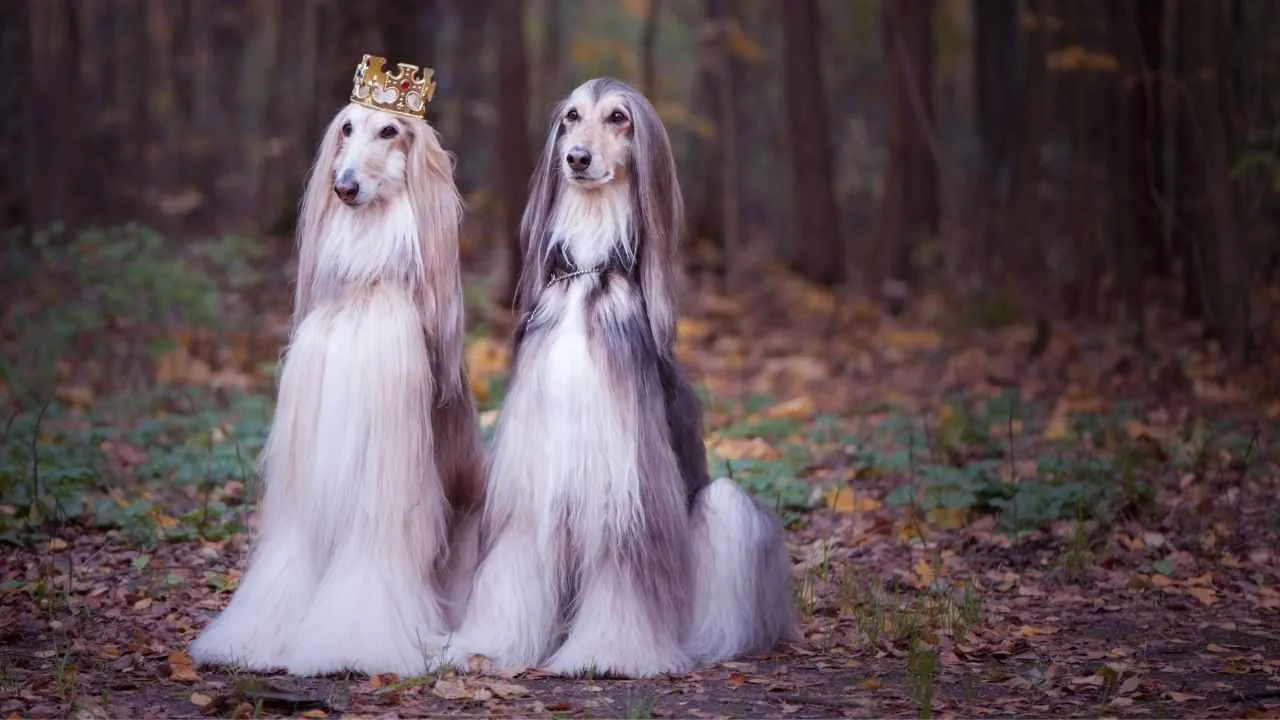
The Afghan Hound developed in the elevated deserts and mountains of Afghanistan, where temperatures soar during the day. Their physiology adapted over centuries to perform under these intense environmental pressures. These native conditions shaped how they move, breathe, and handle exertion.
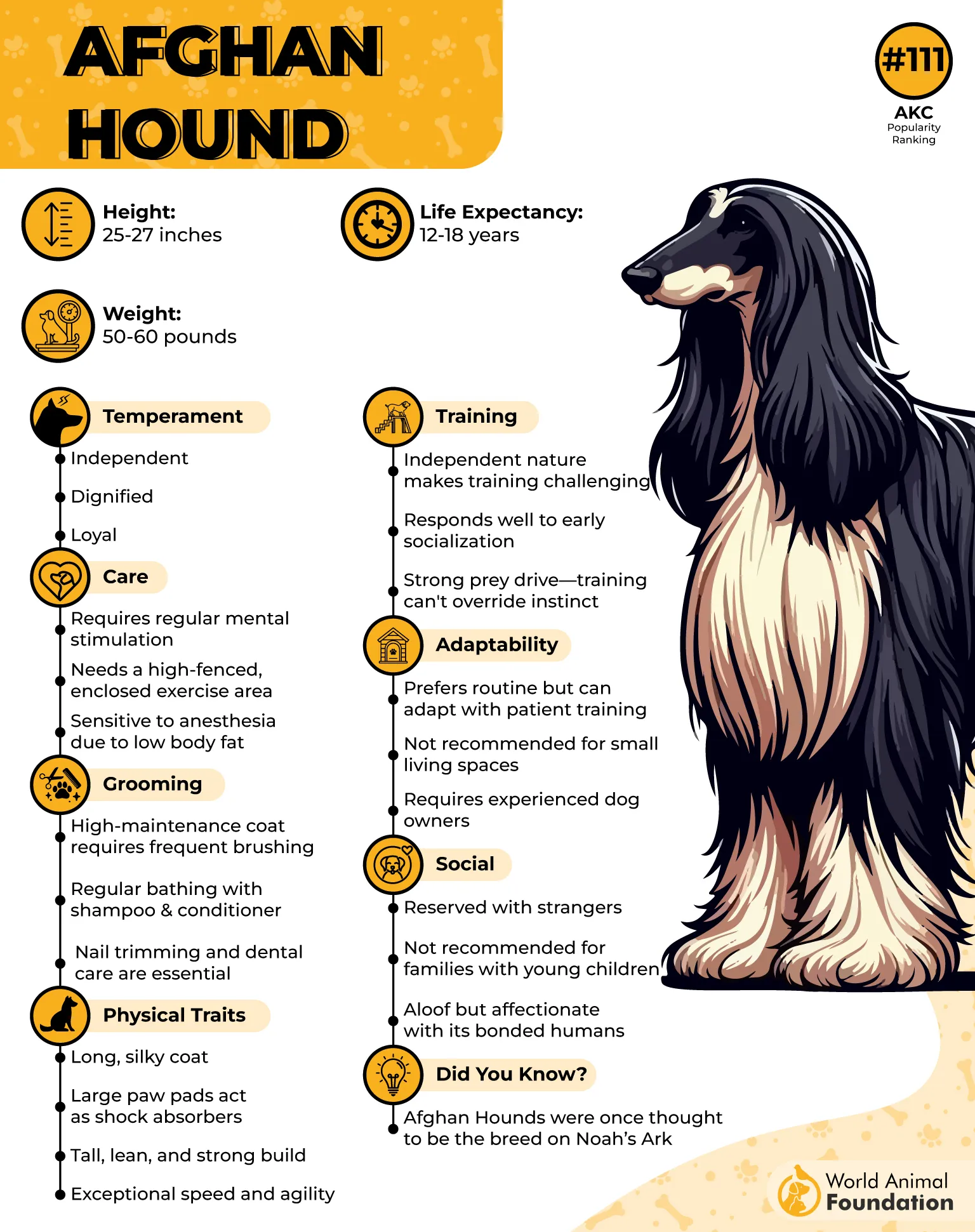
Coat That Works With Heat
The long, fine coat manages airflow across the skin and reduces direct sunlight contact. It helps prevent overheating by slowing the rise in core body temperature. The texture of the coat also allows sweat to evaporate more gradually.
Light Frame With Long Stride
Their long legs and narrow build allow efficient heat release during motion. A wide stride means fewer steps and less energy output in high temperatures. This physical economy reduces stress on the body while remaining agile across open land.
Highly Developed Sight Focus
Bred as a sighthound, they excel at spotting movement far ahead across vast terrain. Their head posture and focused vision let them scan while staying still, limiting unnecessary motion in hot weather. This trait supports calm behavior even when alert and on watch.
5. Chinese Crested
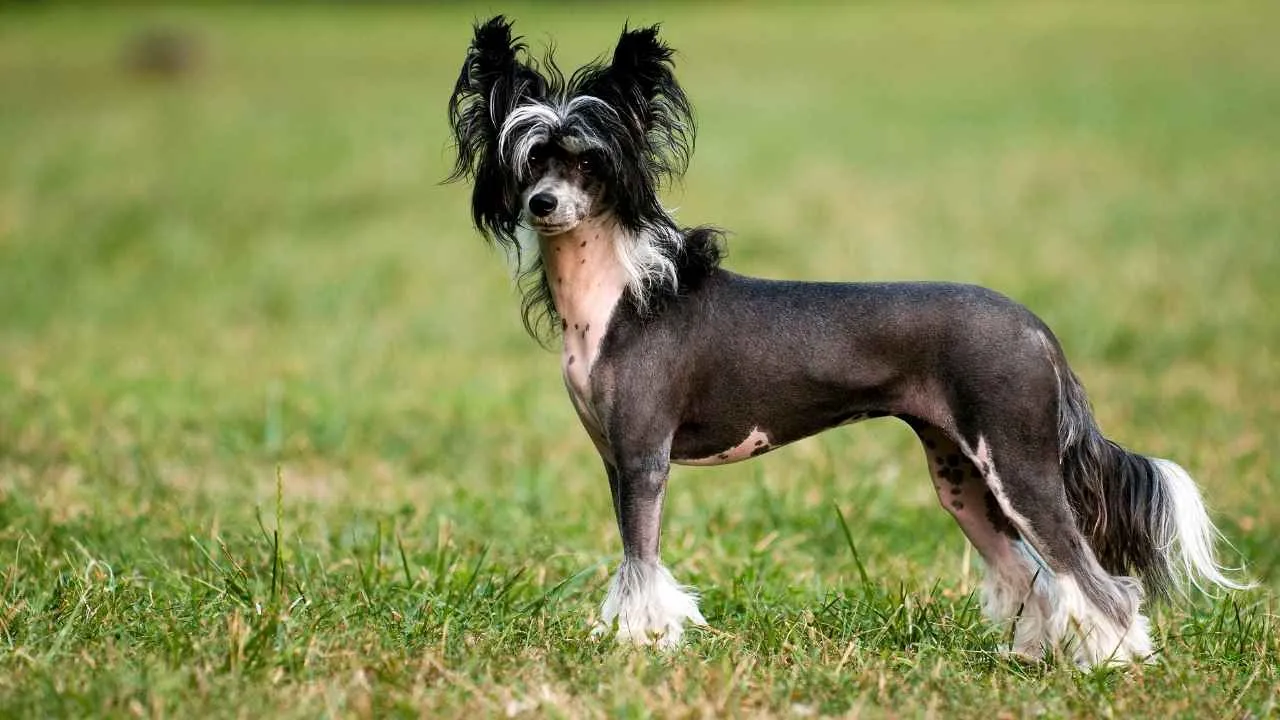
The Hairless variety has exposed skin, which allows quick heat dissipation during high temperatures. They’re often more comfortable in hot environments than coated breeds with thick fur. Owners must still be cautious about sunburn due to their exposed skin.
Low-Sweat Energy Levels
Their naturally low activity needs match climates where overexertion could be risky. Instead of constant motion, they prefer light indoor movement and short outings. This self-pacing behavior helps avoid overheating without needing constant supervision.
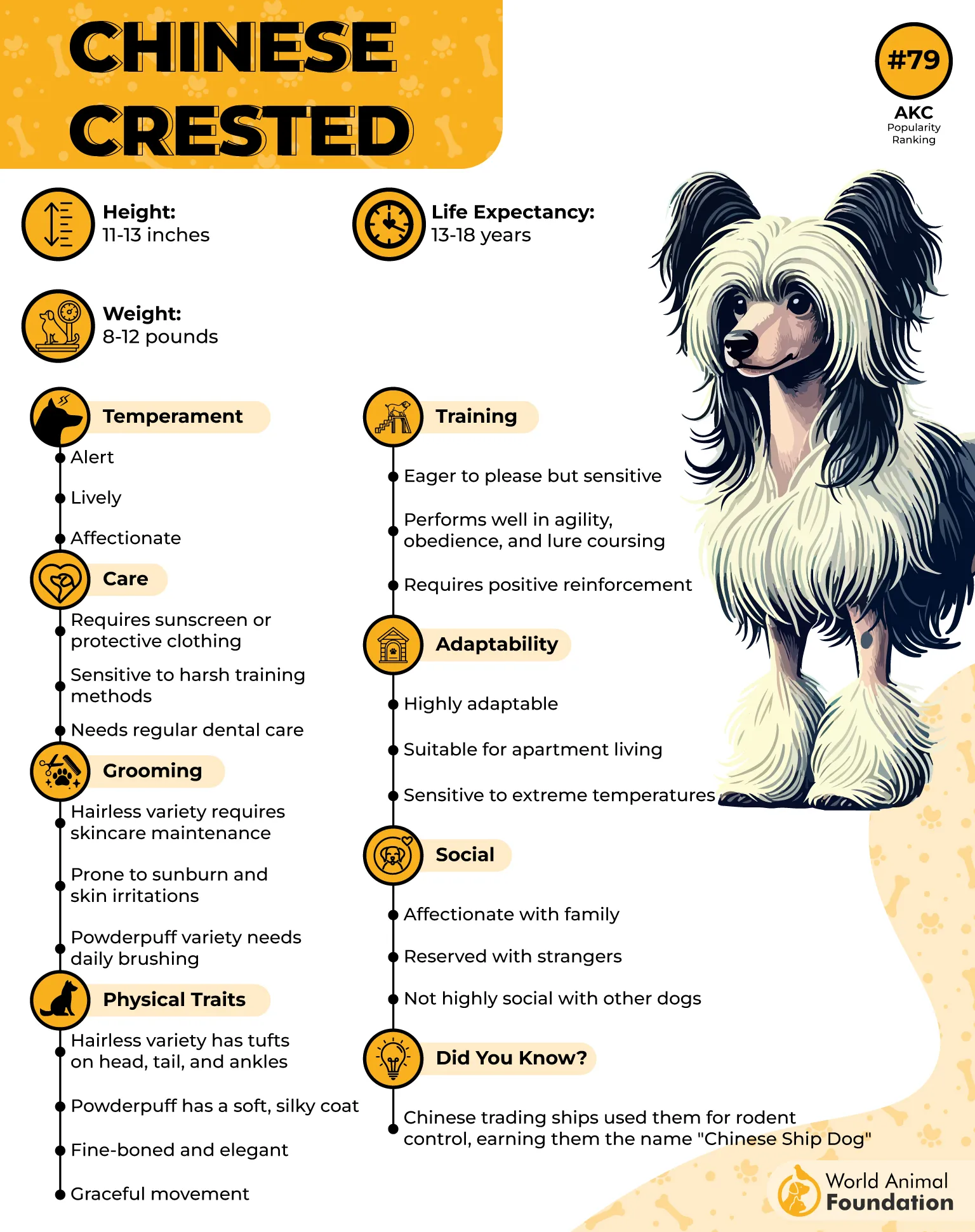
Sensitive but Stable Around People
Chinese Cresteds build strong attachments with family, but they’re not reactive or easily stressed outdoors. Their calm presence doesn’t agitate livestock or small children, which suits homes with varied energy levels. They pick up on moods without becoming overstimulated.
A World Record Holder
A Chinese Crested named Sam famously held the title of “World’s Ugliest Dog” for several consecutive years. This quirky fame brought the breed into public attention without altering its selective breeding. It remains one of the most recognizable toy breeds today.
6. Italian Greyhound
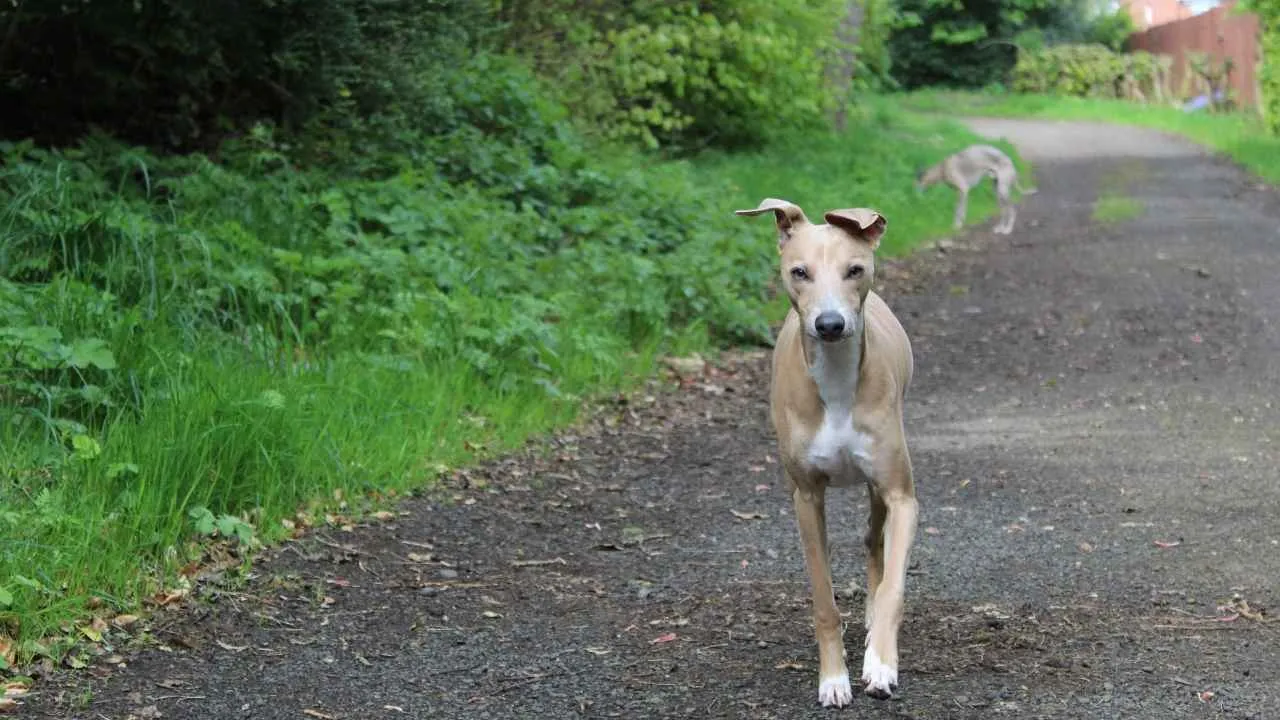
Italian Greyhounds tolerate moderate heat better than cold, thanks to their short, sleek coat and lean build. They prefer dry warmth and remain active in shaded outdoor areas. A soft, grassy surface helps protect their thin skin from minor cuts or abrasions.
Quick Cooling After Activity
Because of their low body fat and narrow structure, they lose heat faster than denser breeds. Even after short runs, they regulate temperature efficiently without overheating. This helps them stay comfortable during low-impact movement in warmer seasons.
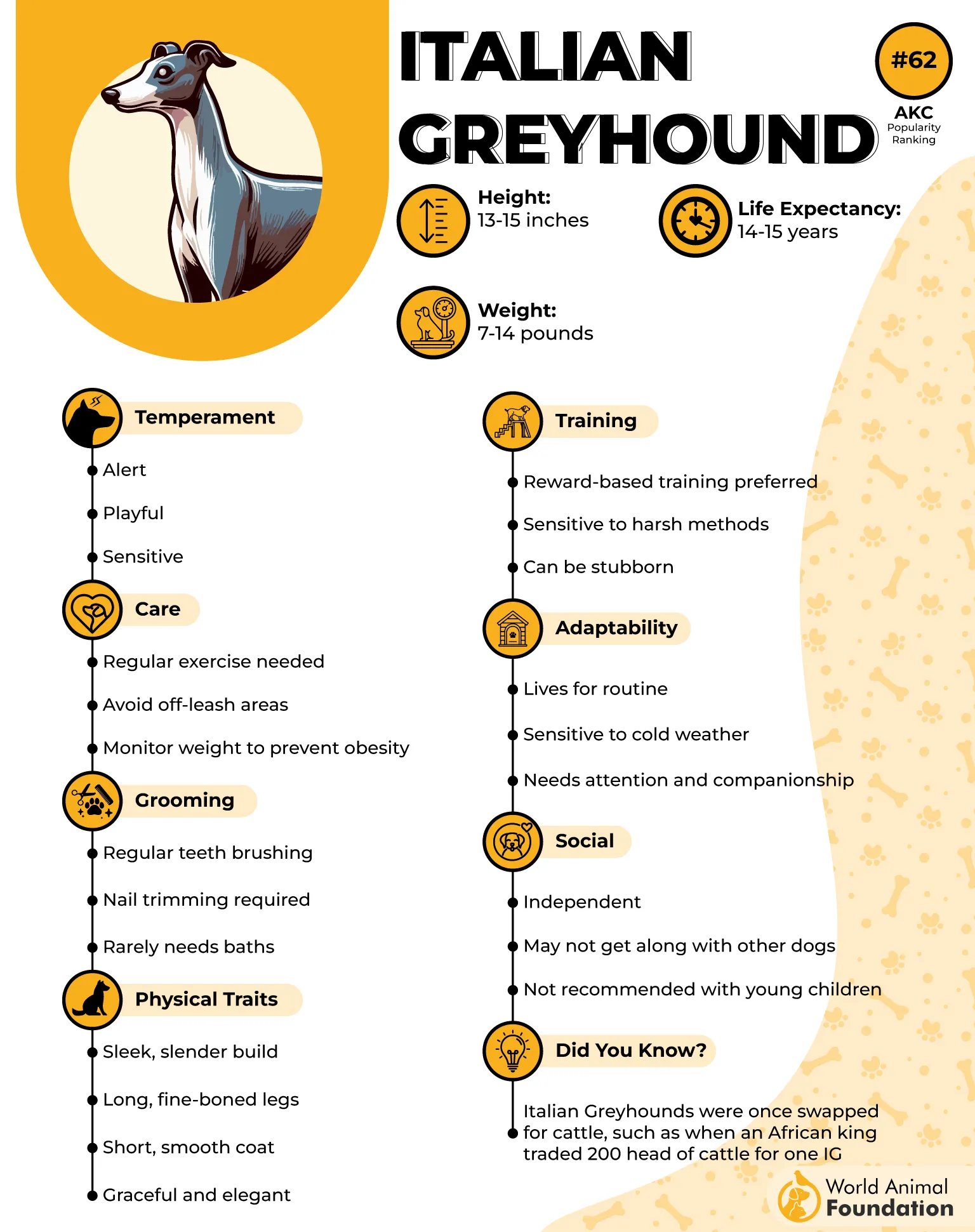
Natural Sensitivity to Ground Surfaces
Their paw pads and joints are sensitive to hot pavements or uneven terrain. During summer, they often choose cooler soil or shaded concrete when resting. Activity is best scheduled for early mornings or late evenings to prevent surface burns.
Historical Companions of Royalty
Italian Greyhounds were a favorite in Renaissance courts, often appearing in portraits beside noble families, as mentioned in the AKC. Historical records show they lived indoors as pampered pets with access to gardens. Their long association with indoor-outdoor lifestyles continues to suit them today.
7. American Hairless Terrier
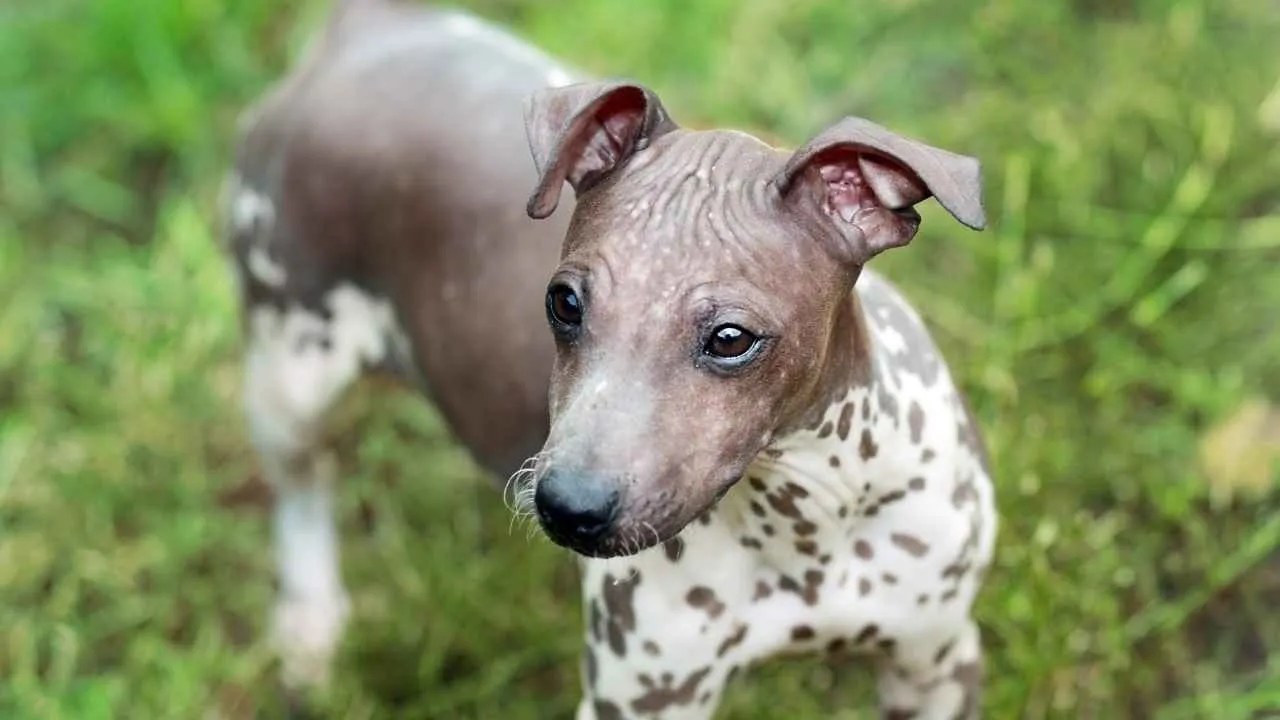
With no fur to trap heat, this breed relies on skin regulation and environmental awareness to stay cool. They avoid overheating by seeking shade quickly and adjusting activity instinctively. Their exposed skin allows rapid heat exchange, which suits dry or humid climates.
Indoor Activity Compatibility
They’re naturally drawn to indoor play, which makes managing temperature easier in hot regions. Moderate exercise routines with mental challenges are more beneficial than extended outdoor exertion. Their small frame supports agility games over endurance tasks.
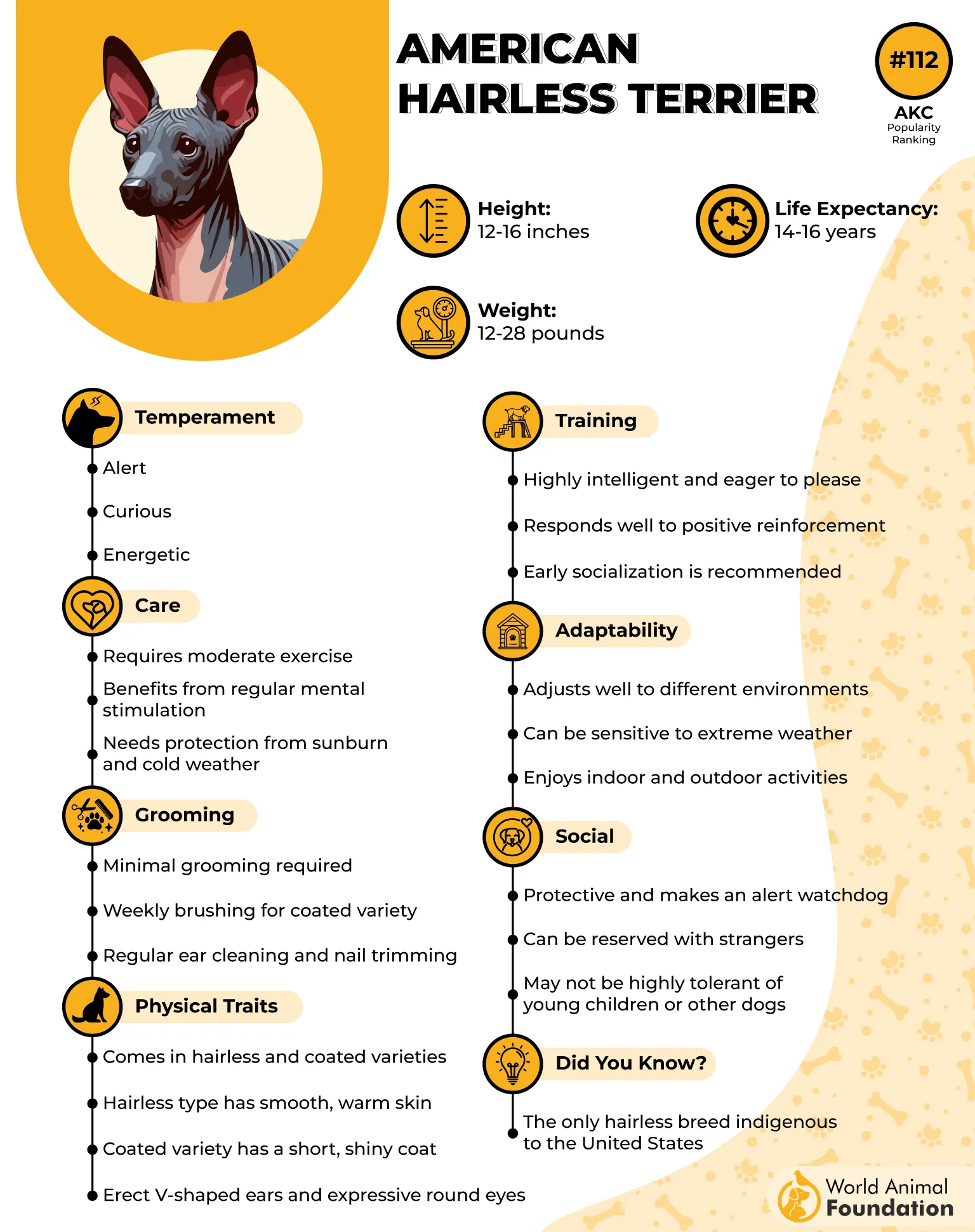
Skin Care Instead of Grooming
Without fur, their skin needs protection from direct sunlight and rough terrain. Daily applications of dog-safe sunscreen and light clothing are commonly recommended by vets. Their skin also reacts faster to environmental irritants, so surface exposure should be monitored.
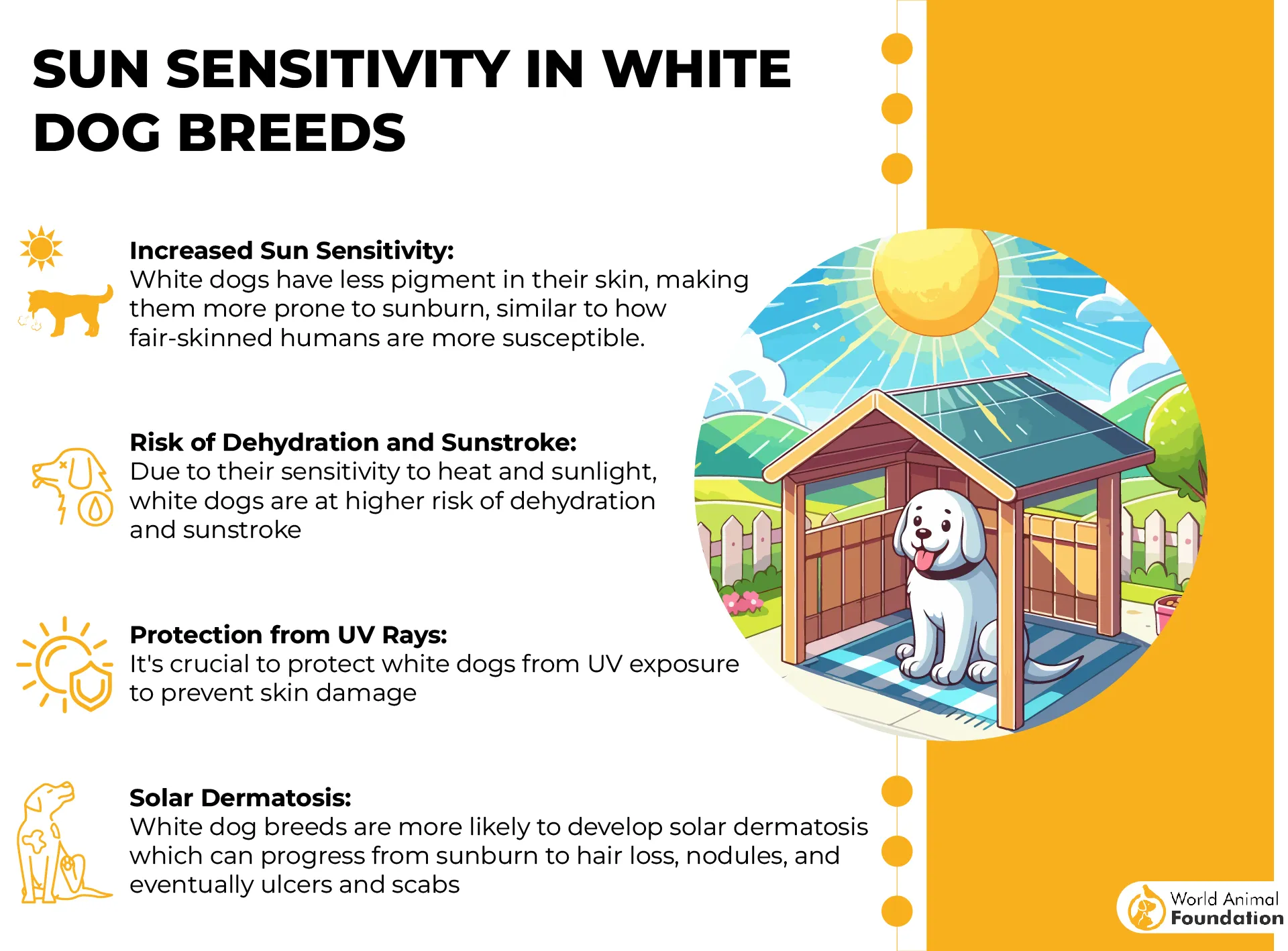
Rare Origin with a Mutation
The American Hairless Terrier descends from a single hairless pup born in 1972 in Louisiana to a Rat Terrier litter, as per WebMD. This natural mutation was preserved intentionally through selective breeding.
8. Whippet
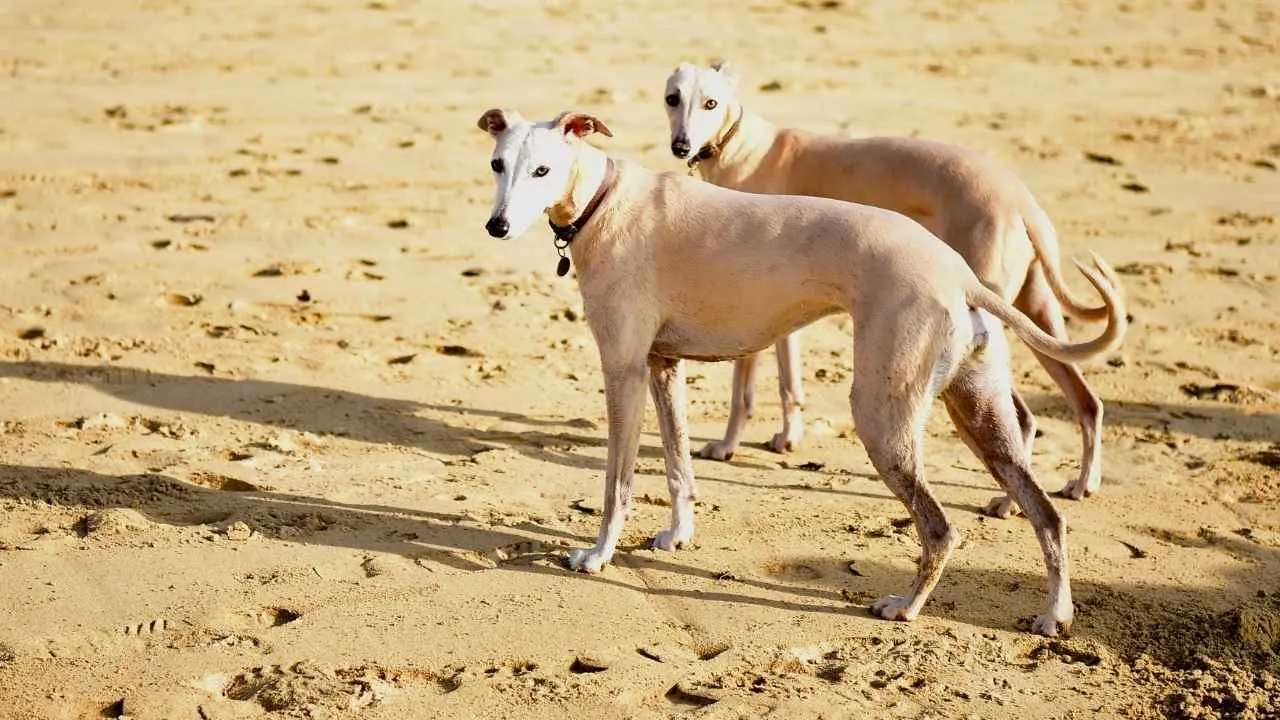
The Whippet’s lean frame and low body fat make it less prone to overheating in warm climates. Their thin skin and short coat enhance heat dissipation, especially during outdoor activity. They handle temperature changes efficiently when properly acclimated.
Energy Use in Hot Weather
They typically conserve energy indoors and sprint in short bursts, which aligns well with hotter regions. Early mornings or evenings are their preferred times for exercise. Their routine naturally avoids high sun exposure without requiring much guidance.
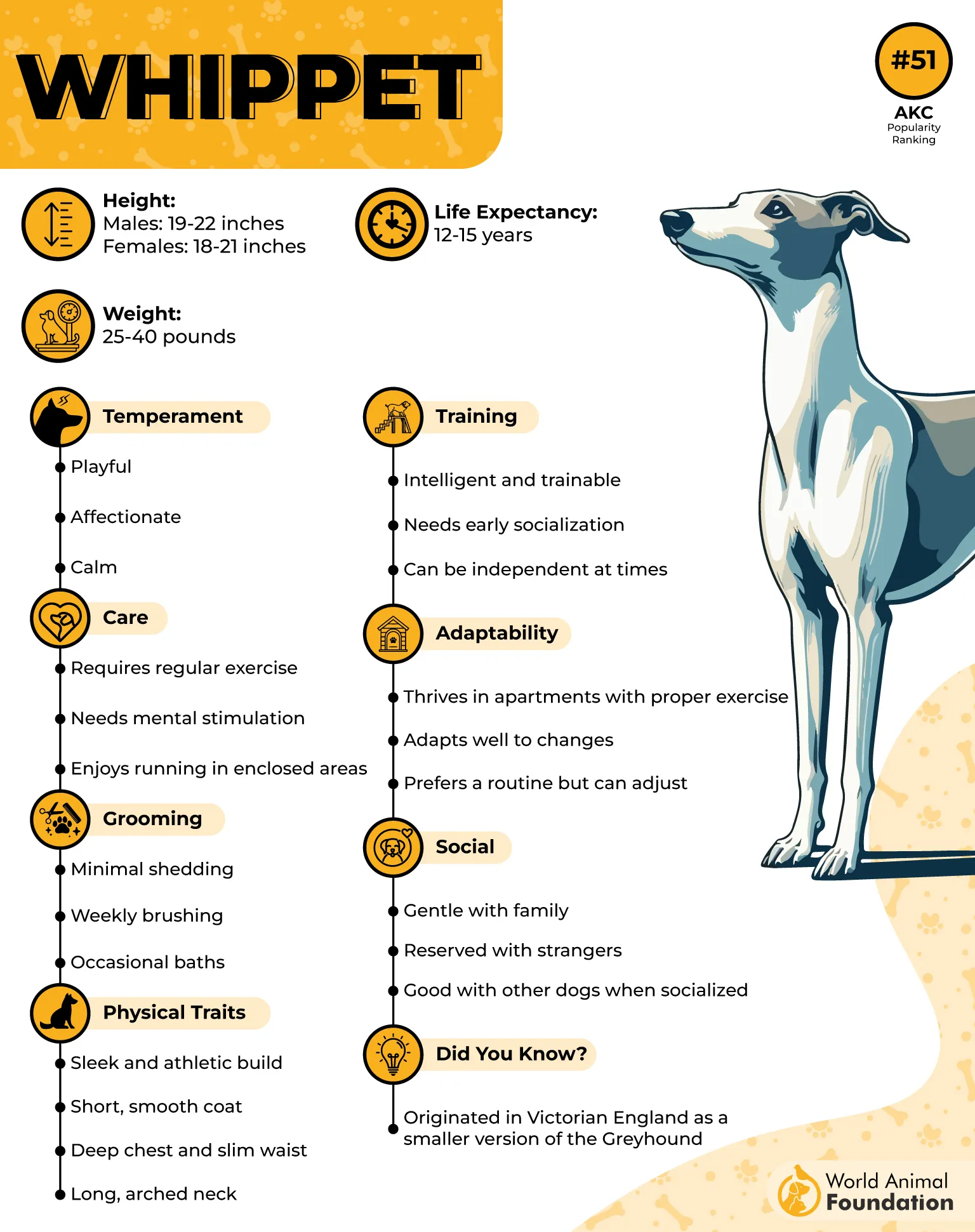
Skin and Coat Considerations
Their coat doesn’t provide insulation from sunburn, so they prefer soft shade or cool indoor surfaces. Whippets often burrow into bedding or seek tiled floors during peak heat hours. Sunscreen is occasionally recommended for pale-skinned individuals.
Historical Use in Warm Regions
Originally bred in northern England, they later gained popularity in the American South for racing and companionship. Whippets can reach speeds up to 35 mph, yet remain calm and restful indoors. That unique contrast supports life in climates with extreme midday heat.
9. Basenji
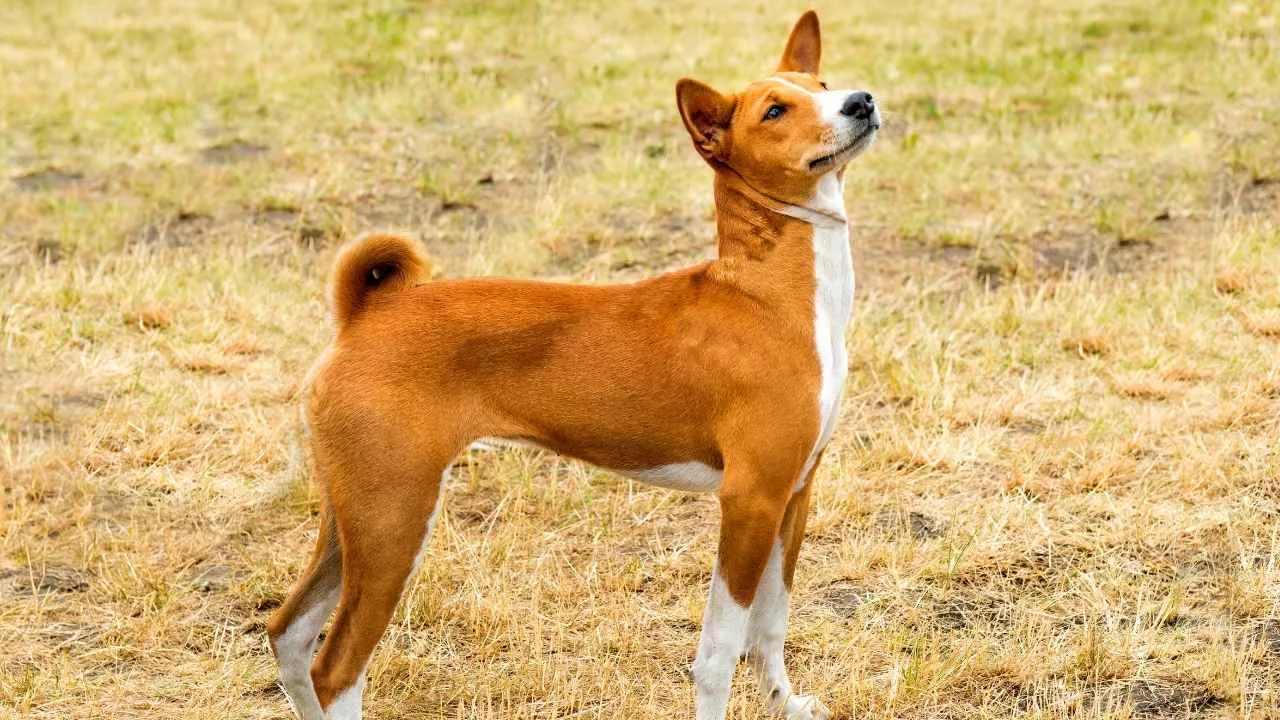
The Basenji’s fine, single-layer coat offers minimal insulation, allowing heat to dissipate quickly. This low-retention fur helps prevent overheating, especially in areas with intense daytime sun. Regular self-grooming keeps the coat free of debris, which adds to its cooling efficiency.
Heat-Appropriate Energy Rhythm
This breed shows peak energy in the cooler parts of the day, often resting through the midday heat. Their exercise needs are satisfied with short, active bursts rather than prolonged exposure. This rhythm mirrors patterns observed in native African dog populations.
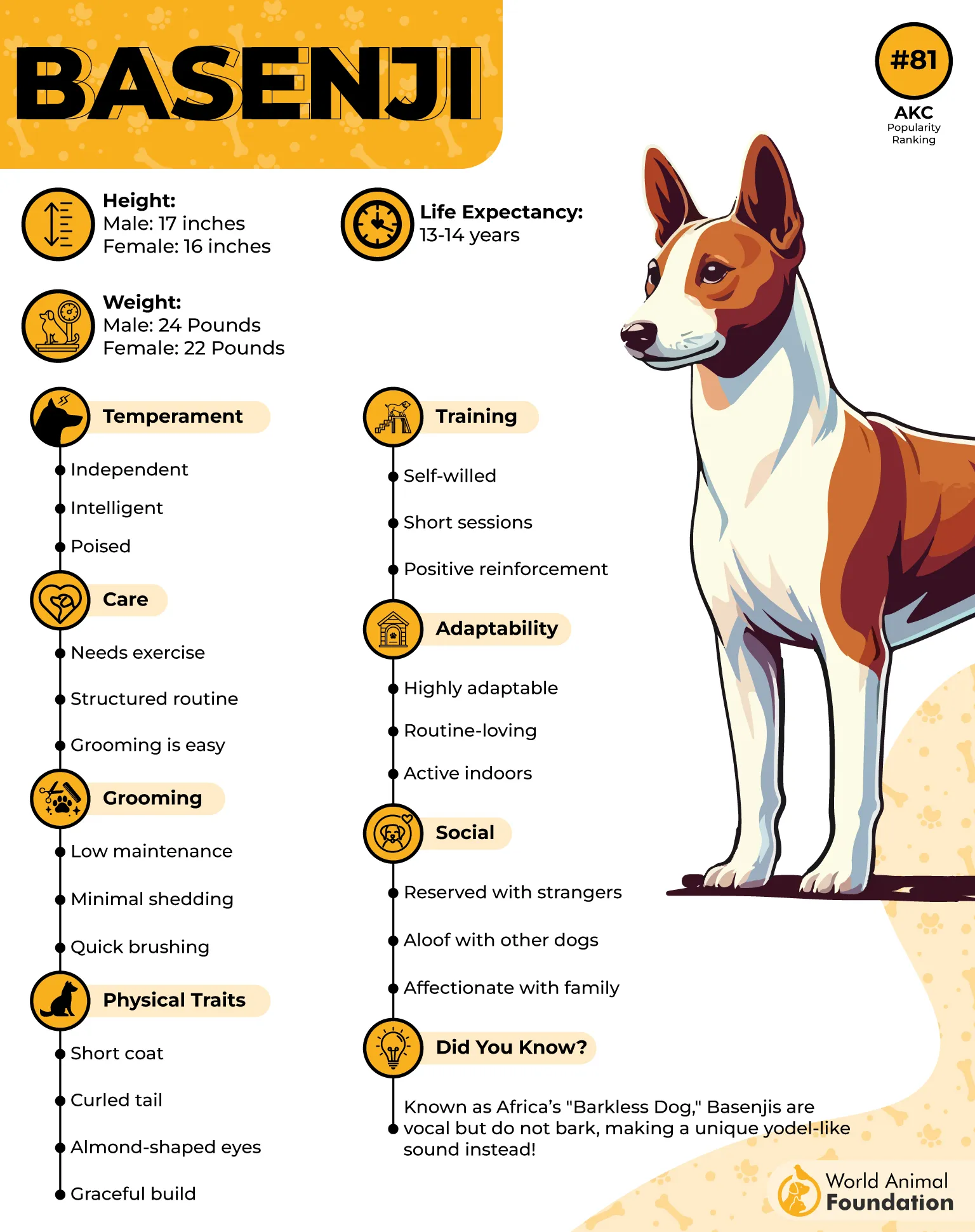
Origins Rooted in the Congo
The Basenji was originally bred for hunting in Central Africa, where dense forests and high humidity prevail. Their physiological tolerance to tropical climates developed over centuries in the Congo Basin. That long-standing adaptation supports their resilience in modern hot-weather homes.
Silent, But Highly Responsive
Basenjis are famously known as the “barkless dog” due to their uniquely shaped larynx. Instead of barking, they produce a yodel-like sound known as a “barroo.” This trait evolved alongside their alert nature, allowing quiet but efficient communication during hunting in thick, heat-heavy terrain.
10. Greyhound
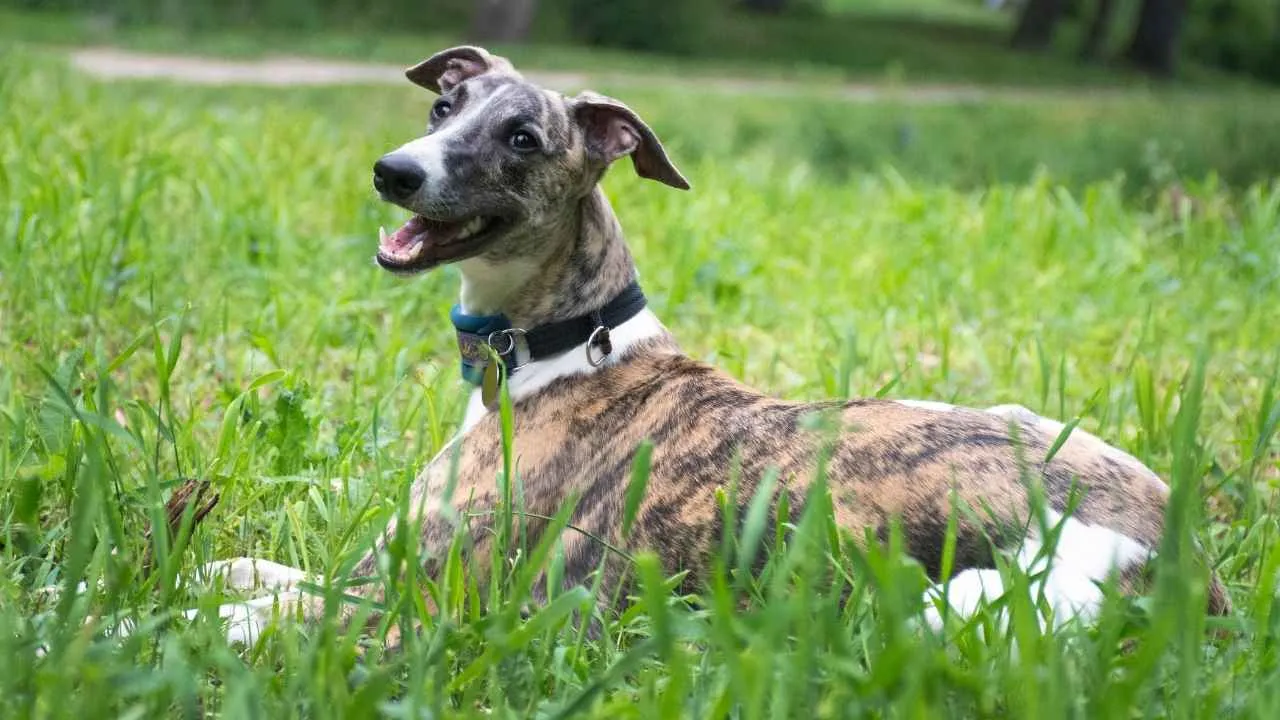
Greyhounds have an ultra-thin coat and almost no undercoat, which allows body heat to escape faster. Their skin isn’t insulated the way it is in double-coated breeds, reducing the risk of overheating. This natural setup makes them a practical choice for high-temperature settings.
Low Output Energy
Their short bursts of sprinting don’t translate to constant motion throughout the day. Greyhounds spend long periods resting, and that low daytime activity keeps their core temperature stable. They naturally avoid exerting themselves when it’s hot outside.
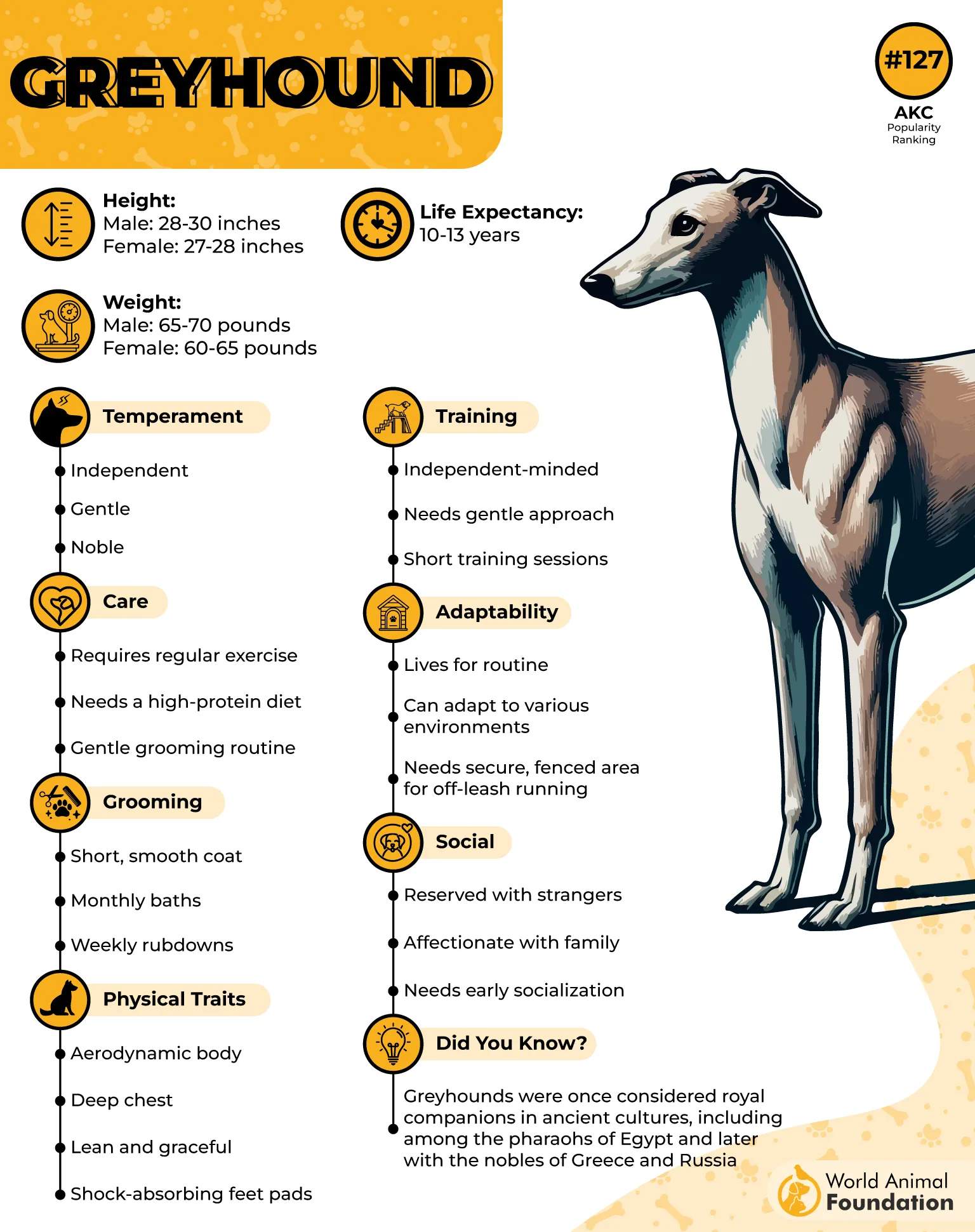
Physiology That Manages Heat
Their lean body mass means less fat acts as insulation, making it easier for them to stay cool after movement. The breed’s build supports efficient blood flow and quicker recovery from heat exposure. These traits are hardwired into their athletic structure.
Ancient Roots in Hot Regions
Greyhounds were among the earliest domesticated hunting dogs in the Middle East and North Africa. Archaeological findings place them alongside early desert civilizations where high daytime temperatures were normal. That origin plays a key role in their comfort with warm climates.
Conclusion
Choosing the right dog for hot climates means thinking beyond looks. Breeds with short fur or lean frames manage heat better and are less prone to excessive panting on hot days.
Many of these dogs stay active with light daily exercise, then rest like natural couch potatoes when the sun is high. Unlike those built for cold weather or cold climates, they don’t rely on thick fur or heavy insulation.
Even so, they’ll still need shade, fresh water, and the occasional break in air conditioning to stay comfortable. Whether your dog has a silky coat or bare skin, heat tolerance starts with choosing a breed that’s built for your environment. The options in this guide offer relief, energy, and calm, even on the warmest afternoons.


